When choosing between FDM and resin for gaming miniatures, you’ll need to weigh five key factors: print quality (resin offers 10-micron resolution versus FDM’s 50-400 microns), costs (FDM runs $0.02 per miniature versus resin’s $0.05), post-processing complexity (FDM needs simple cleanup while resin requires safety gear and chemical washing), learning curves (resin’s simpler initially, FDM’s more consistent long-term), and applications (FDM excels at terrain, resin dominates intricate character details). Understanding these trade-offs will help you make the perfect choice for your specific gaming needs.
Print Quality and Detail Resolution
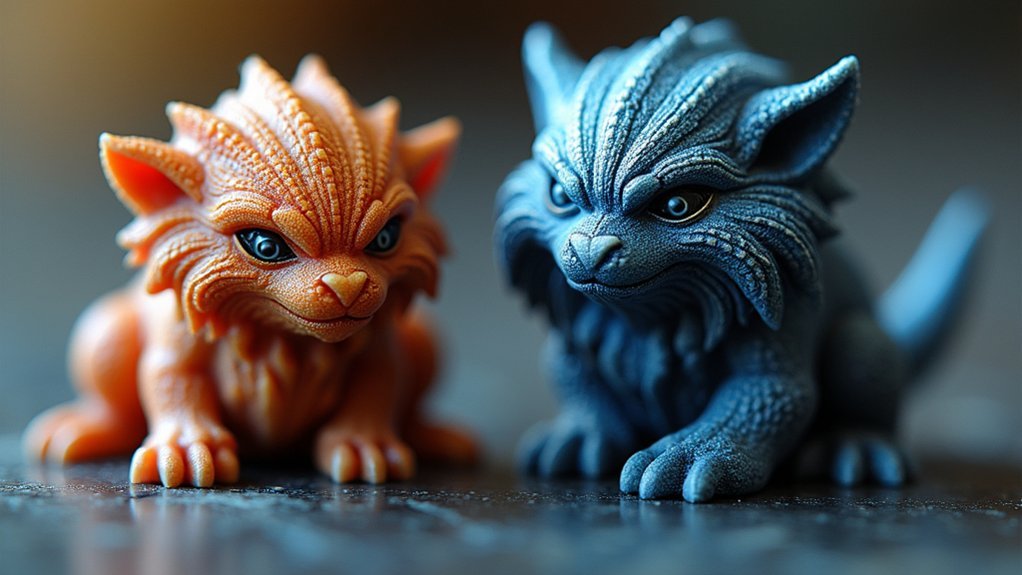
When you’re choosing between FDM and resin printing for gaming miniatures, print quality and detail resolution become the deciding factors that’ll make or break your project.
Resin printing delivers exceptional high resolution with layer heights as low as 10 microns, creating smoother surfaces perfect for detail and precision work. You’ll notice the stronger bonding between cured layers enhances accuracy, while anti-aliasing technology eliminates surface imperfections.
With layer heights reaching just 10 microns, resin printing achieves unmatched surface smoothness and detail precision for miniature work.
FDM printers operate with layer heights between 50-400 microns, producing visible layer lines that compromise overall quality.
While FDM excels at larger, cost-effective prints, it can’t match resin’s superiority for miniature printing.
When weighing the pros and cons, resin consistently outperforms FDM for intricate gaming miniatures requiring exceptional print quality.
Cost Analysis: Equipment and Materials
Budget considerations will greatly impact your choice between FDM and resin printing for gaming miniatures. Affordable budget models like the Ender 3 start around $200, while entry-level resin printers range from $200-$300.
However, filament costs markedly favor FDM printing at $15-$20 per spool versus the cost of the resin at $30 per bottle. You’ll produce approximately 1,000 miniatures per filament spool at $0.02 each, compared to 830 miniatures per resin bottle at $0.05 each—making FDM 2.5 times cheaper for mini production.
Ongoing costs also differ substantially, as FDM requires minimal additional expenses while resin printing demands safety equipment, isopropyl alcohol, and UV curing devices.
Initial investments for both printing materials and equipment typically total $500-$600 if you’re acquiring both systems.
Post-Processing Requirements and Safety
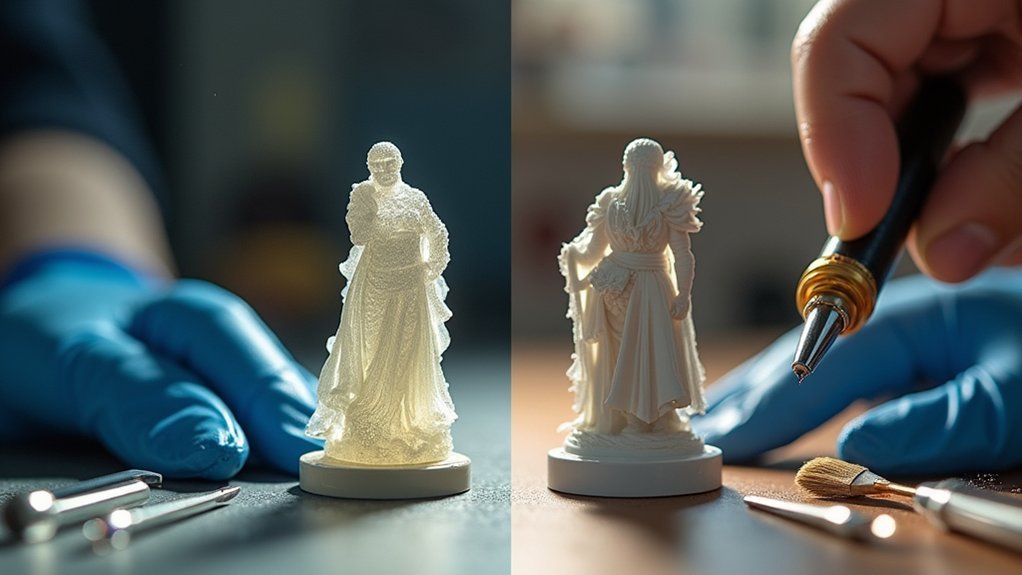
Beyond the printer costs, you’ll face dramatically different post-processing workflows and safety requirements between FDM and resin printing.
FDM prints need simple cleanup—cutting supports and brims, then brief sanding after 20-30 seconds of cooling. You can safely handle these models immediately.
Resin prints demand extensive safety measures due to their toxic nature.
You’ll need:
- Protective gear – nitrile gloves and eyewear when handling resin
- Alcohol washing – removing excess resin with isopropyl alcohol
- UV curing process – proper hardening before safe handling
The detailed finish from resin printing comes with significant responsibility.
Never touch uncured resin with bare skin, and verify complete washing and curing before handling finished models.
While post-processing resin prints requires more steps, the superior quality often justifies the additional safety requirements.
Learning Curve and Ease of Use
Although resin printers appear more intimidating due to safety requirements, they actually offer a gentler learning curve for beginners than FDM machines. The calibration process for resin printers is straightforward, requiring minimal adjustments compared to FDM’s complex bed leveling and slicer settings. This accessibility makes resin printing easier for newcomers to master quickly.
However, FDM vs resin comparison shows different long-term challenges. Once you’ve established good profiles, FDM becomes more consistent, while resin printers demand frequent setting adjustments for different colors and types.
FDM’s advantage lies in visible print progress, allowing real-time monitoring and immediate troubleshooting. Failed prints also differ greatly: FDM requires simple disposal, while resin involves messy post-processing with toxic materials requiring protective gear and careful handling.
Best Applications for Gaming Projects
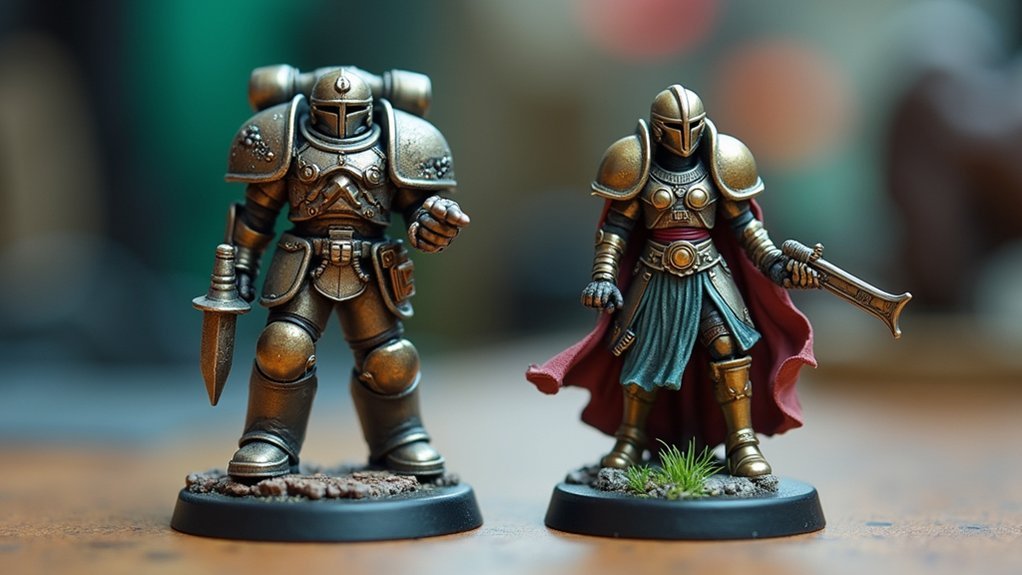
When choosing between FDM and resin for your gaming projects, you’ll want to match the technology to your specific needs rather than assuming one superior method exists.
FDM and resin printers each excel in different gaming applications. While FDM’s lower resolution makes it less suitable for intricate details, it’s the best for printing large terrain pieces and accessories where speed matters more than precision.
Resin delivers the high detail and smooth surface needed for showcase miniatures.
Consider these specific applications:
- Terrain and Large Props: FDM’s faster speeds and larger build volumes make it the best fit for printing terrain pieces and gaming accessories.
- Character Miniatures: Resin excels at intricate details required for competitive gaming figures.
- Bulk Projects: FDM’s lower costs and minimal post-processing to achieve acceptable results favor quantity production.
Frequently Asked Questions
Is Resin or Filament Better for Miniatures?
You’ll get better results with resin for miniatures since it produces finer details and smoother surfaces at 10-micron resolution. However, you’ll pay more per miniature and need extra safety equipment for post-processing.
Is FDM Better Than Resin?
FDM isn’t universally better than resin – it depends on your priorities. You’ll save money with FDM, but you’ll sacrifice detail quality that resin delivers for miniatures.
What Are Three Disadvantages of FDM?
You’ll notice visible layer lines affecting surface quality, struggle with lower resolution limiting fine details, and spend considerable time on post-processing like sanding and support removal.
What Are the Disadvantages of Resin 3D Printing?
You’ll face higher costs, toxic material handling requiring safety gear, labor-intensive post-processing with alcohol washing and UV curing, slower print speeds, and more fragile finished prints requiring careful handling.

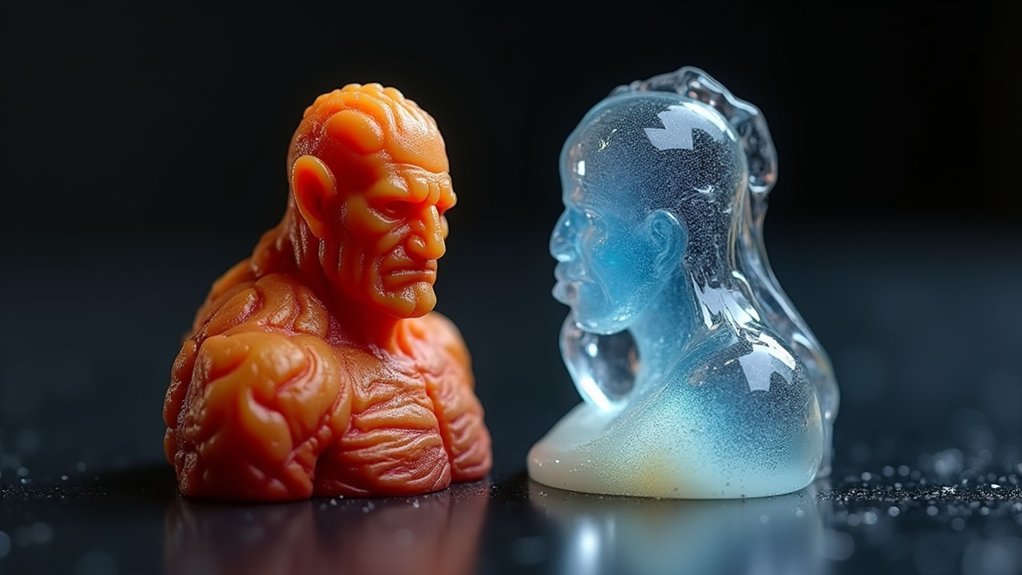
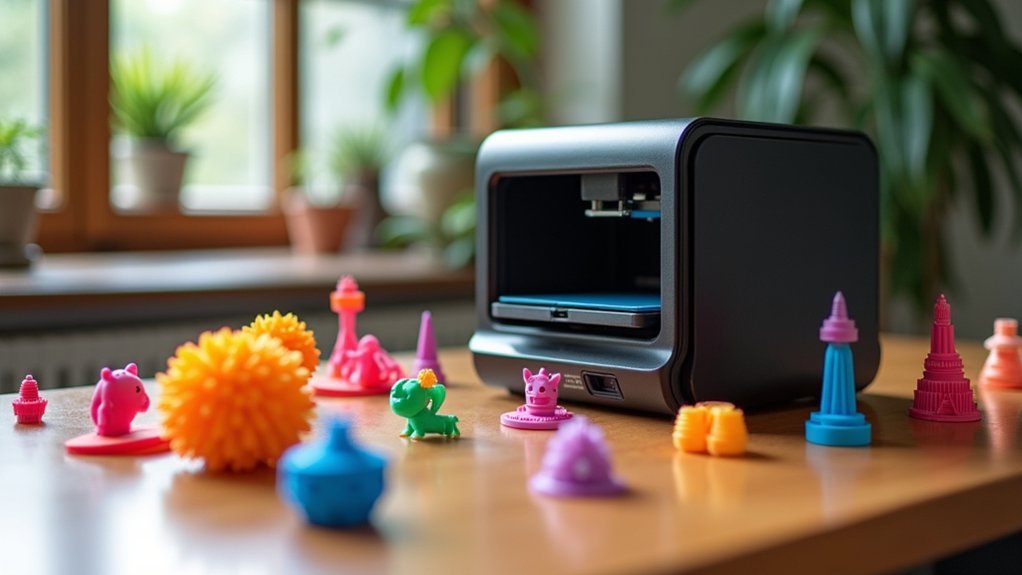
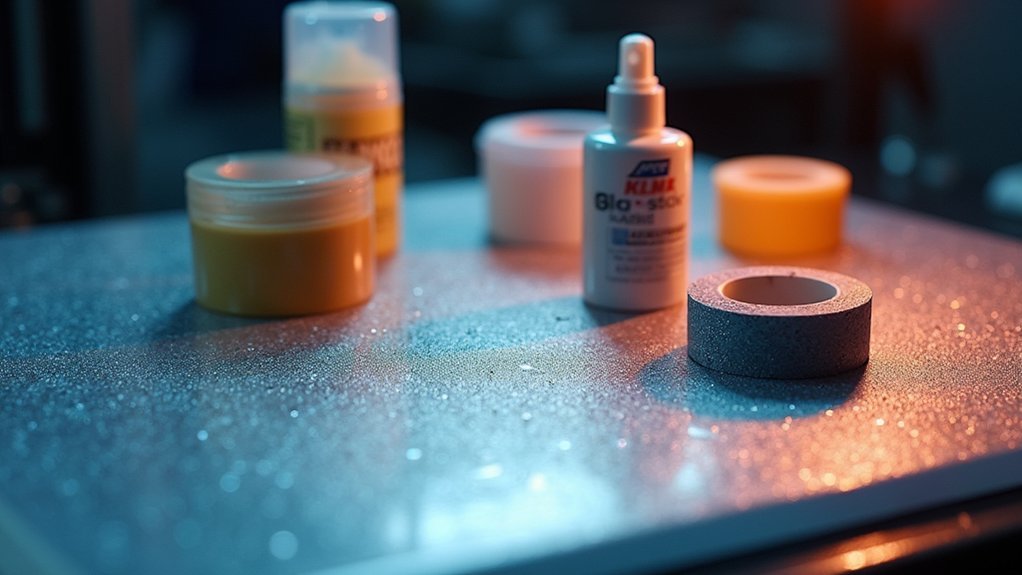
Leave a Reply